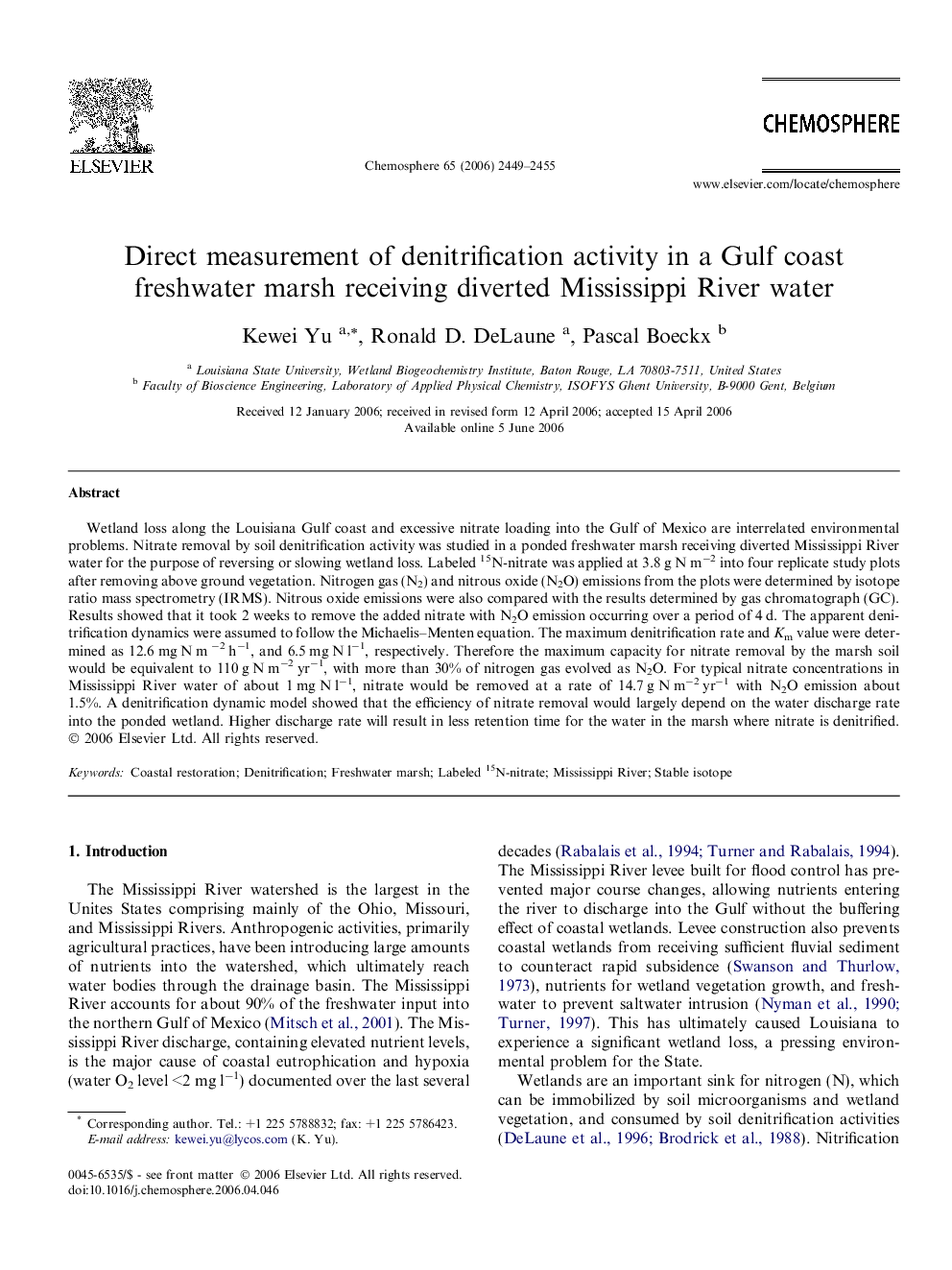| Article ID | Journal | Published Year | Pages | File Type |
|---|---|---|---|---|
| 4416071 | Chemosphere | 2006 | 7 Pages |
Wetland loss along the Louisiana Gulf coast and excessive nitrate loading into the Gulf of Mexico are interrelated environmental problems. Nitrate removal by soil denitrification activity was studied in a ponded freshwater marsh receiving diverted Mississippi River water for the purpose of reversing or slowing wetland loss. Labeled 15N-nitrate was applied at 3.8 g N m−2 into four replicate study plots after removing above ground vegetation. Nitrogen gas (N2) and nitrous oxide (N2O) emissions from the plots were determined by isotope ratio mass spectrometry (IRMS). Nitrous oxide emissions were also compared with the results determined by gas chromatograph (GC). Results showed that it took 2 weeks to remove the added nitrate with N2O emission occurring over a period of 4 d. The apparent denitrification dynamics were assumed to follow the Michaelis–Menten equation. The maximum denitrification rate and Km value were determined as 12.6 mg N m −2 h−1, and 6.5 mg N l−1, respectively. Therefore the maximum capacity for nitrate removal by the marsh soil would be equivalent to 110 g N m−2 yr−1, with more than 30% of nitrogen gas evolved as N2O. For typical nitrate concentrations in Mississippi River water of about 1 mg N l−1, nitrate would be removed at a rate of 14.7 g N m−2 yr−1 with N2O emission about 1.5%. A denitrification dynamic model showed that the efficiency of nitrate removal would largely depend on the water discharge rate into the ponded wetland. Higher discharge rate will result in less retention time for the water in the marsh where nitrate is denitrified.
